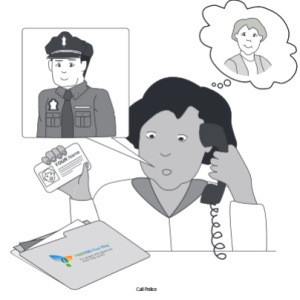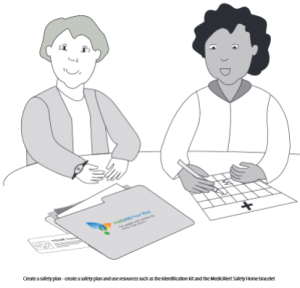
What is Aphasia?
Imagine trying to tell someone where you are hurt or how you feel, but you can’t find the words or phrases to get across what you are trying to say. How would this impact your relationships with friends and family and all the other aspects of life where communication is essential?
This condition – when someone knows what he or she wants to say but cannot express it – is called aphasia. Aphasia is most often the result of stroke or head injury, but people in early stage dementia often are considered to have aphasia as well.
People with aphasia still have the ability to think and make decisions. Sadly, aphasia often masks a person’s intelligence because of the inability to communicate feelings, thoughts and emotions. The condition leads to frustration and isolation.
The good news is that we can do something to help through creating environments where the person can express themselves. Training service providers to use special communication techniques known as Supported Conversation for Adults with Aphasia (SCA™), ensures that the individual is included in important decision-making events and has access to health care and community services.
The SCA framework developed by Dr. Aura Kagan at the Aphasia Institute prompts the care provider to ‘acknowledge competence,’ which helps the person ’who knows more than they can say’ feel as though they are being treated respectfully. They are also taught how to ‘reveal competence,’ using techniques to ensure accurate exchange of information, opinions and feelings. 
Pictographs are graphic images that can convey complex sophisticated messages and abstract concepts in a clear easily understandable manner. The Alzheimer Society of Ontario partnered with the Aphasia Institute for the Finding Your Way™ project to create pictographs to help explain the dangers of going missing and how to prevent such incidents from happening.
Although developed for aphasia, using pictographs along with other SCA™ techniques such as speech and intonation cues, gesture and writing can engage people with dementia in conversation. SCA™ techniques can help by maintaining a shared focus and attention, and by facilitating conversational behaviours such as taking turns in speaking and listening, initiating a topic of shared interest/knowledge, and maintaining a topic across several comments.
Learn more about Finding Your Way.
Speech-Language Patholigist

